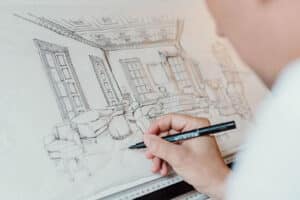Thirty years ago, sustainability was very much about environmental issues. It was about conserving an ecological balance by avoiding the depletion of natural resources. Over subsequent years our thinking has become more sophisticated, science has improved, our understanding of systems has improved, as well as our understanding of the interconnected nature of the environment. With this, the definition of sustainability has broadened to become a ‘catch-all’ word for a form of progressive economic thinking that encompasses three key elements; the environment, society and finance and this is known as the ‘Triple Bottom Line.’ Sustainability is no longer just about resource efficiency; it is also about environmental balance, equality, social development and progress.
Ten years ago, a BBC journalist told me that using the word sustainable in a strapline was a great way to kill an article. But fast forward to today and sustainability has become a far more engaging topic. One that is used to define brands and boosts sales. But while the increased awareness is hugely encouraging, we must also educate ourselves to provide solutions with a genuine impact, rather than perpetuating stories that make us feel better but deliver very little.
A few years ago I was speaking to a climate change journalist who told me from his experience “People understand the interconnected nature of the world wide web. But there isn’t that understanding of nature.” It was an important observation because many people have become disengaged and mentally cut off from the natural world, allowing us to carry on in a fictitious world of continual growth and infinite resources. It is unsurprising, given that human ingenuity has allowed many of us to work in virtual spaces, buy food without ever seeing a field, and work in climate-controlled environments. In many respects, we are utterly insulated. But that doesn’t mean that the broader risks are not there.
Designers should be engaged. Our role is to engineer solutions that benefit clients, customers and the wider society. All too often, the industry has failed to deliver the outcomes that are necessary on an environmental and social level. If anything, it perpetuates the problems of over-consumption and waste.
In my opinion, designers do not have a responsibility to be environmentally neutral or sustainable. However, they are duty-bound to create the designs that are appropriate for the future, rather than reinventing the past. This means products and spaces that look great, are good quality and priced competitively, but crucially leave a positive environmental and social legacy. To achieve this, designers must use their influence to tackle systemic problems head-on, such as; avoiding non-recyclable materials, supporting positive businesses, avoiding suppliers who rely on exploited labour markets and continuing to learn about supply chains and the origins of materials.
The design industry is built on a linear system of consumption. Huge volumes of material go into making products that can not be taken apart and reused, so it heads for landfill or incinerators. Not only that, obsolescence, be it product failure or frequent style changes, actively encourages this trend and so the whole of society is built upon the accelerated production of waste.
Trends in sustainability are often focused on using less material, being efficient or doing less of something. Although these gestures might make us feel better on a personal level, they have little impact collectively. The design industry needs to adopt a circular approach, understanding where materials come from, using them appropriately and ensuring they can be disposed appropriately of or reused again and again. The focus should not be on sustainability alone, but on good quality design. Products and spaces designed with assembly and disassembly in mind. Based on the right materials and sound product development.
I am a firm believer that humans are at their most ingenious when times are testing. The environmental challenges of the next 50 years are unprecedented; however, it can be a fascinating period for designers and the catalyst for some pretty stunning outcomes.




